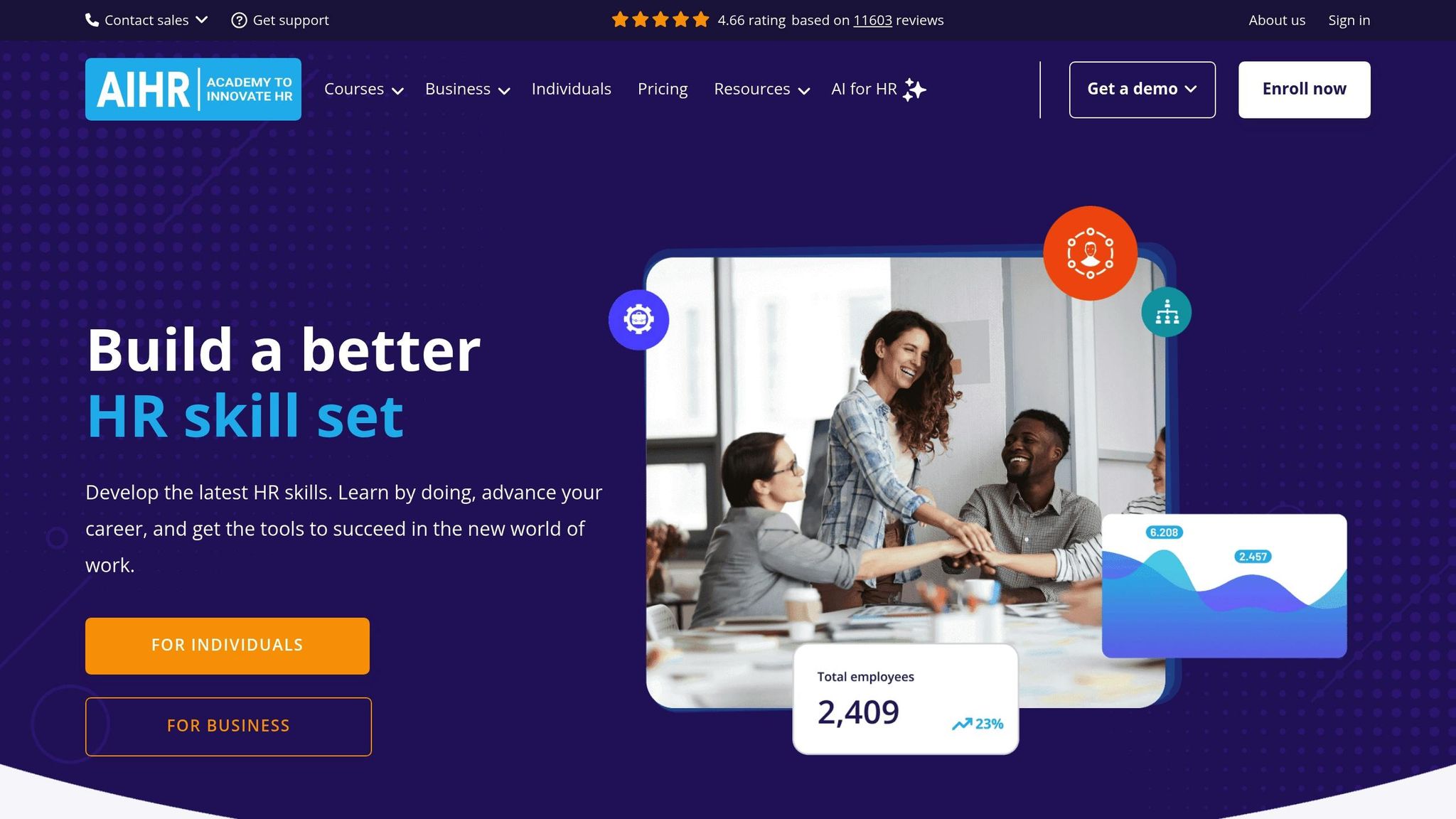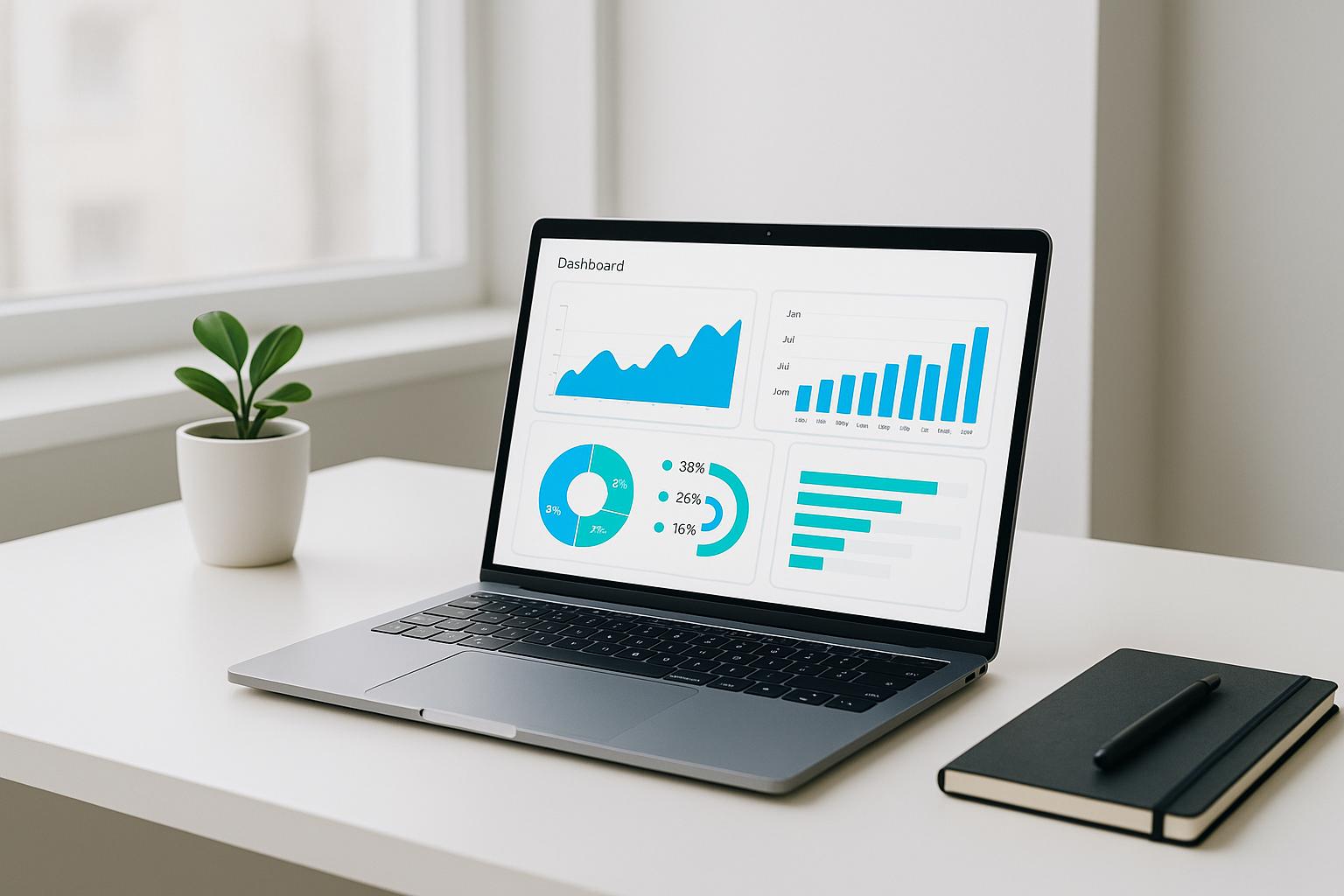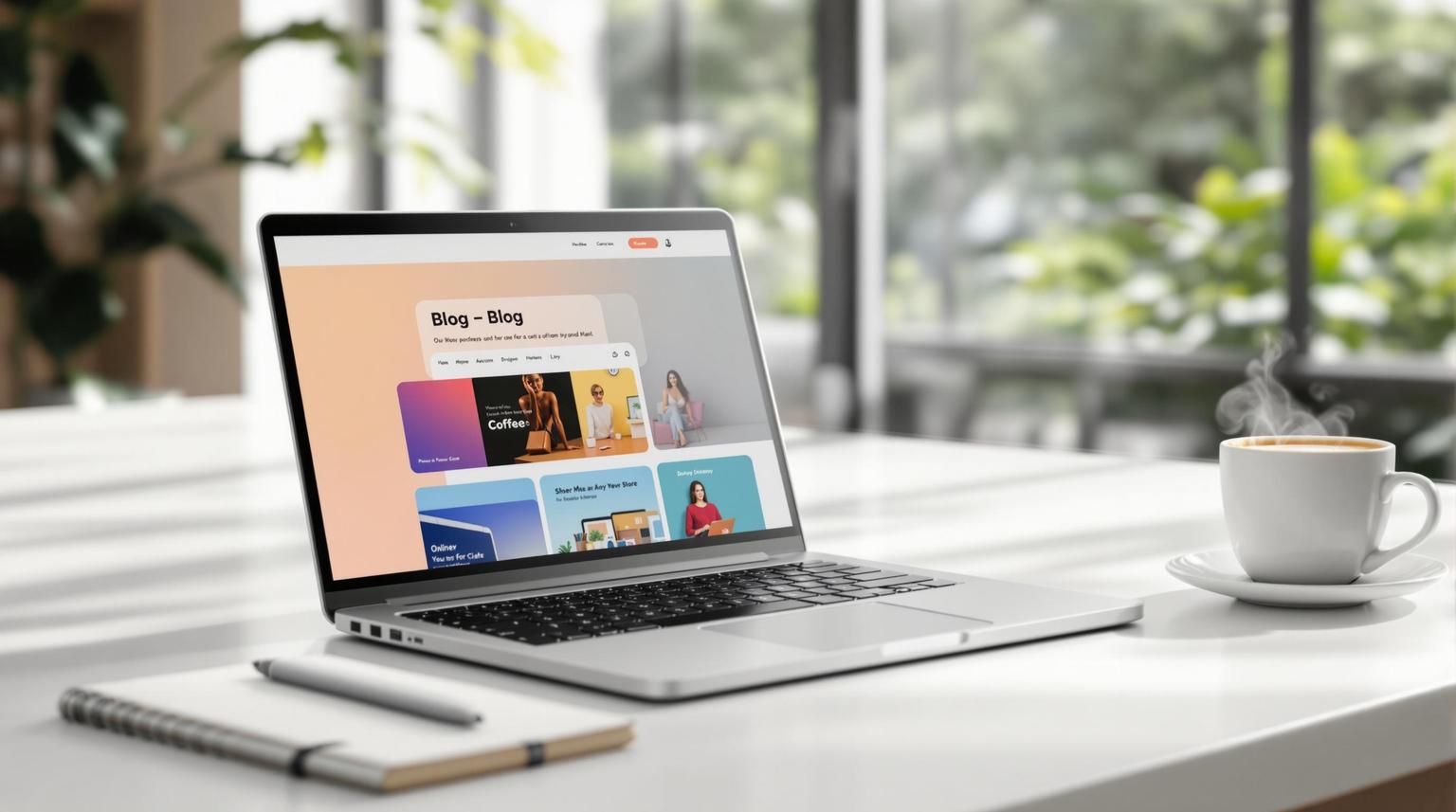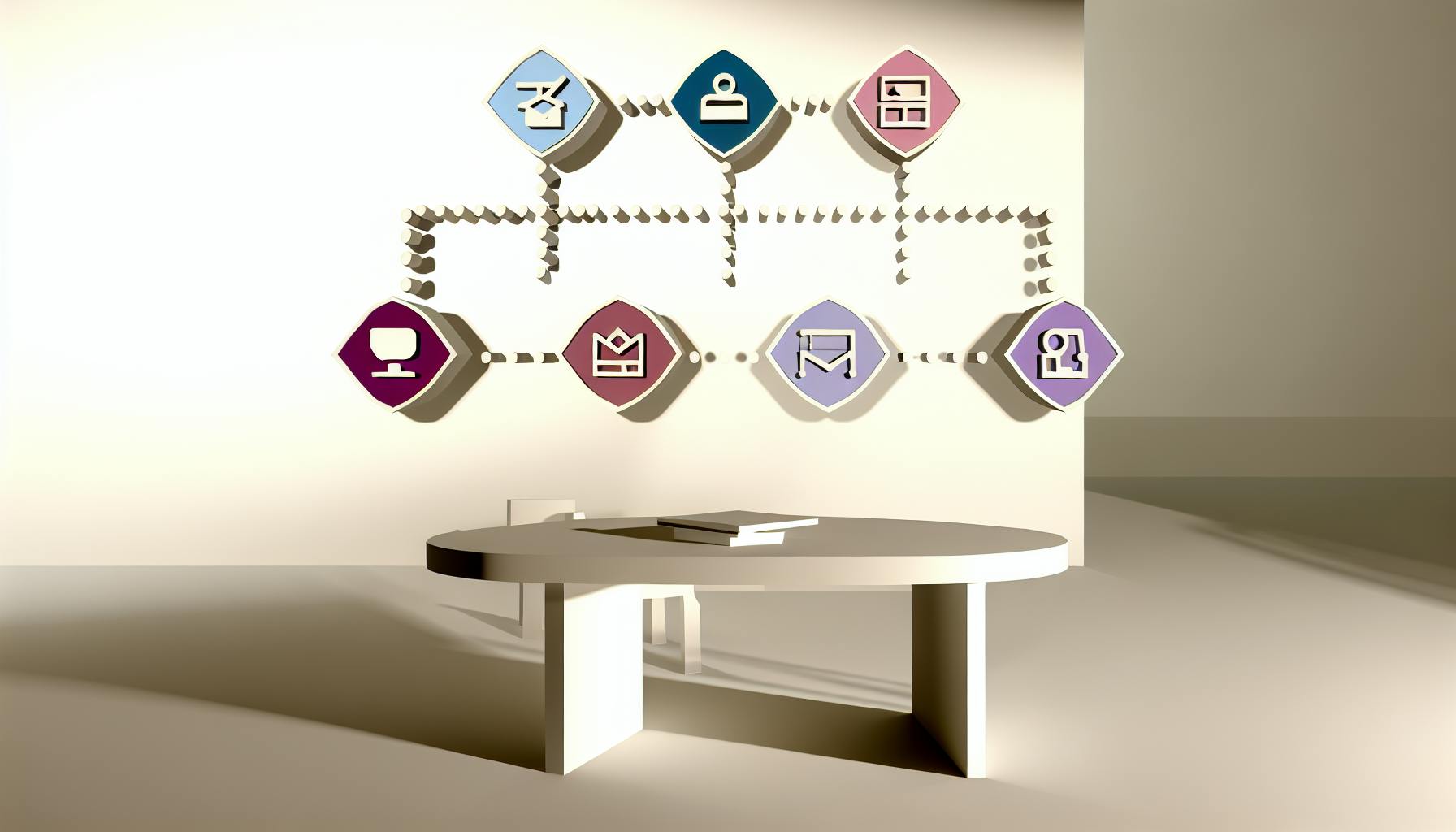Feedback gamification turns workplace feedback into an interactive, rewarding process using elements like points, badges, and leaderboards. It encourages participation, motivates employees, and aligns feedback with modern workplace expectations.
Key benefits include:
- Real-time recognition: Employees receive immediate acknowledgment for their efforts.
- Motivation through rewards: Points and badges incentivize participation and improvement.
- Improved collaboration: Team challenges promote teamwork and break down silos.
- Personal growth tracking: Dashboards help employees monitor skill development and progress toward goals.
However, challenges like initial costs, privacy concerns, and potential unhealthy competition need careful management. To succeed, align gamification with company goals, start small with pilot programs, and continuously refine based on feedback.
Gamification can reshape feedback processes, making them more engaging and effective, but requires thoughtful implementation to avoid pitfalls.
How to Drive Workplace Motivation through Gamification | AIHR Learning Bite

Game Elements in Feedback Systems
Gamified feedback systems thrive by incorporating elements that motivate and engage employees. By turning feedback into an interactive, rewarding process, these systems encourage active participation rather than making it feel like a routine obligation. At the heart of these systems are points, badges, and achievements, which create a foundation for meaningful engagement.
Points, Badges, and Achievements
Point systems are the backbone of most gamified platforms. Employees earn points for actions like submitting peer feedback, completing assessments, or achieving performance goals. This approach provides a tangible measure of participation and contribution that goes beyond traditional metrics.
For instance, an employee might earn:
- 10 points for submitting a peer review
- 15 points for completing a skills assessment
- 25 points for implementing feedback suggestions
To ensure fairness, systems should reward both giving and receiving feedback equally, preventing any bias toward one over the other.
Digital badges add a visual layer of recognition, celebrating specific achievements and areas of growth. These badges might include titles like "Feedback Champion" for consistently providing helpful input, "Growth Mindset" for seeking development opportunities, or "Team Player" for fostering collaboration. These badges aren't just decorative - they highlight the behaviors and values the organization prioritizes.
When combined, points and badges pave the way for milestone-based achievements. For example, employees might celebrate hitting milestones like completing 100 feedback interactions, maintaining a 30-day feedback streak, or earning recognition from multiple colleagues in a single month. These visual markers of progress make abstract concepts like "professional growth" more concrete and measurable, helping employees track their development and understand what the company values.
Leaderboards and Team Challenges
Leaderboards bring a sense of friendly competition to the workplace, showcasing top performers in various feedback-related categories. Rather than focusing solely on individual accomplishments, leaderboards can highlight diverse contributions. For example:
- One leaderboard might feature employees providing the most constructive feedback.
- Another might recognize individuals showing the most improvement based on feedback they've received.
This competitive element resonates well in environments where individual achievement is celebrated. However, to keep things balanced, rotating leaderboard categories ensures that everyone has a chance to shine, regardless of their personality or role.
Team-based challenges shift the focus from individual competition to group collaboration. These challenges might involve goals like meeting departmental feedback quotas, fostering cross-functional teamwork, or driving company-wide engagement. For example, the marketing team could compete with the sales team to see who completes more peer reviews in a month, with the winning team earning a shared reward.
Time-sensitive initiatives, like a "Feedback February" campaign, can further energize participation. Such campaigns might encourage employees to provide feedback to colleagues they haven't worked with directly, breaking down silos and promoting cross-departmental connections.
By normalizing feedback through social and competitive elements, these tools help integrate feedback into the daily work culture. When employees see their peers actively engaging, it reduces the stigma around formal feedback processes and encourages participation. Together, leaderboards and challenges foster both individual and team engagement, setting the stage for continuous feedback.
Real-Time Feedback and Progress Tracking
Instant notifications and real-time updates keep employees connected to the feedback process throughout their workday. Instead of waiting for scheduled reviews, employees receive immediate acknowledgment, which reinforces ongoing participation.
Progress tracking dashboards give employees a clear view of their development journey. These user-friendly interfaces often display:
- Feedback trends
- Skill progression
- Goal achievements
- Engagement metrics
For example, an employee might track how their communication skills have improved over time or monitor their progress toward specific professional goals.
Personalized feedback suggestions take it a step further by analyzing past interactions. If an employee frequently receives feedback about improving presentation skills, the system might recommend relevant training resources or suggest connecting with a colleague who excels in that area.
Additionally, peer recognition feeds provide live updates on milestones across the organization, offering more opportunities for acknowledgment and social reinforcement.
This real-time approach aligns with modern expectations for instant recognition. Employees no longer have to guess whether their efforts are appreciated - they receive immediate confirmation, which helps maintain engagement and focus on their development goals. By seamlessly integrating into the broader feedback system, these updates ensure that employees remain aligned with their growth objectives while feeling valued every step of the way.
How to Set Up Feedback Gamification
Setting up feedback gamification means aligning it with your company’s values, choosing the right tools, and tweaking the system to keep employees engaged.
Check Your Needs and Pick Tools
Start by surveying your team to uncover pain points. Are feedback exchanges too rare? Is peer recognition lacking? Or maybe feedback isn’t clearly tied to professional growth? Identifying these gaps will help you shape your approach.
Consider your company’s size and structure, as these factors will determine the complexity of the gamification system you need. A smaller team might thrive with a straightforward points system and peer recognition tools. Larger organizations, on the other hand, may need advanced features like department-specific leaderboards or detailed analytics.
Budget and technical requirements are equally important. Look for cost-effective, easy-to-integrate tools that won’t require heavy IT support. Cloud-based platforms are often a smart pick since they’re simple to set up and maintain. Tools offering features like single sign-on (SSO), mobile access, and customizable rewards are ideal. BizBot’s HR automation directory can be a helpful resource for finding platforms tailored to your needs.
Lastly, ensure that the platform you choose can handle your team’s size and offers reliable customer support. Once you’ve nailed down the tools, it’s time to design engaging feedback activities.
Create Feedback Activities
With tools in place, the next step is crafting activities that make feedback engaging and meaningful. For example, set up peer nomination programs to recognize specific achievements or behaviors that reflect company values, like teamwork or creativity.
You can also tie feedback challenges to business cycles, such as performance reviews. During these periods, encourage employees to provide detailed evaluations of their colleagues, awarding points for actionable and thoughtful feedback. This keeps the process structured and goal-oriented.
Another idea is to link feedback to skill-building. Create challenges where employees identify areas for growth, seek input from peers, and track their progress over time. This approach shifts feedback from being a one-off event to an ongoing development tool.
Cross-departmental activities can also shake things up. For instance, having employees from different teams observe and provide feedback on each other’s work can uncover workflow improvements and foster better collaboration across departments.
Whatever activities you design, make sure they align with your business goals. If improving customer service is a priority, focus feedback activities on client interaction skills. For teams working on innovation, create challenges that encourage creative problem-solving.
Build Reward Systems and Feedback Cycles
Motivate your team by creating a reward system that offers a mix of monetary and non-monetary incentives.
Recognition can be both private and public. For instance, send personalized thank-you notes from leadership to employees who excel in giving feedback. Highlight top contributors in newsletters or during company-wide meetings. You could even create a “Feedback Hall of Fame” on your intranet or in a shared workspace to keep the momentum going.
Offer rewards like professional development opportunities, extra time off, or one-on-one sessions with leaders. These kinds of perks show employees that their growth matters to the organization.
When it comes to feedback cycles, match them to your business’s natural rhythms. Some teams may benefit from frequent, quick check-ins, while others might prefer more in-depth reviews spaced further apart. Set up cycles that encourage reflection, goal-setting, and continuous improvement, and consider adding milestones to keep engagement high.
Once your system is up and running, it’s crucial to track its performance.
Track Results and Make Improvements
After implementing your gamification setup, measure its impact to ensure it’s working as intended. Start by setting baseline metrics and tracking participation, feedback quality, and overall satisfaction. Initially, monitor these metrics frequently, but as the system matures, you can transition to periodic reviews.
Dive into participation data to spot trends and issues. Which activities are popular? Are certain groups more engaged than others? If some activities aren’t gaining traction, it could signal unclear instructions or a lack of motivation.
Regularly assess the quality of feedback being shared. Is it constructive and actionable? If not, consider tweaking your reward system to encourage more thoughtful input.
Employee surveys can also offer valuable insights. Use the results to fine-tune reward options, clarify activity instructions, and improve overall satisfaction with the system. Sometimes, these surveys reveal ideas or adjustments you might not have considered.
Finally, connect the outcomes of your gamification efforts to broader company goals. For instance, better collaboration might lead to smoother projects, or improvements in customer service could boost client satisfaction scores. These results not only justify the investment but also guide future updates to your system.
sbb-itb-d1a6c90
How Feedback Gamification Affects Employee Engagement
Feedback gamification combines game-like elements with workplace feedback systems, reshaping how employees connect with their roles and collaborate with one another. By integrating these interactive features, companies can spark changes that influence workplace culture and overall performance.
Increasing Motivation and Productivity
Gamified feedback taps into the psychological triggers that make activities more engaging. When employees earn points, badges, or spots on leaderboards for their contributions, it mirrors the reward systems found in popular mobile games. This immediate recognition fosters a sense of accomplishment and drives engagement.
Unlike traditional annual reviews, which often feel disconnected from daily tasks, gamified systems create ongoing feedback loops. These loops provide consistent motivation, keeping employees energized and focused throughout the year rather than experiencing dips in productivity between formal review periods.
The competitive aspect of gamification, when managed thoughtfully, encourages a healthy sense of rivalry. Employees are more likely to take on challenging tasks or volunteer for new responsibilities when they know their efforts will be acknowledged. This heightened individual drive often leads to stronger team collaboration, as employees strive for shared success.
Building Team Collaboration and Recognition
Gamified feedback doesn’t just boost individual performance - it also strengthens team dynamics. For example, cross-departmental challenges can uncover hidden skills and foster connections between teams that might not typically work together. Imagine marketing staff providing feedback on customer service interactions; both groups gain insights and build mutual respect in the process.
Public recognition, such as leaderboards or achievement displays, shifts the focus from individual wins to team success. Employees begin to view their colleagues’ accomplishments as shared victories, especially when systems reward collaboration alongside personal achievements.
Team-based challenges also promote knowledge-sharing in ways that traditional training programs often struggle to achieve. When employees know they’ll earn recognition points for mentoring or sharing expertise, they’re more inclined to invest time in helping others grow.
Supporting Personal Development and Goal Achievement
Gamification’s impact goes beyond immediate results, extending to long-term professional development. It transforms personal growth from a company-driven mandate into an employee-led initiative. Employees using these systems often become more proactive in seeking feedback and identifying areas for improvement.
Features like milestone tracking break down larger career goals into smaller, manageable steps. This allows employees to monitor their progress in real-time instead of waiting for annual reviews to discuss their development. Real-time tracking helps them adjust their efforts and stay on course.
Skill-building becomes more focused when gamified feedback highlights the competencies that matter most. Employees receive actionable suggestions for improvement, creating personalized development plans that align with their ambitions and the company’s objectives.
Benefits and Drawbacks of Feedback Gamification
Feedback gamification can offer a range of advantages, but it's not a one-size-fits-all solution. Weighing the pros and cons can help businesses decide if it’s the right fit for their needs and ensure realistic expectations for their teams.
Benefits of Feedback Gamification
One major benefit is better employee retention. Gamified feedback systems often make employees feel more valued and connected to their work by offering regular recognition. Unlike traditional annual reviews, these systems create a constant feedback loop that highlights progress and achievements.
Real-time performance insights are another plus. Managers can quickly spot trends, address challenges, and celebrate successes as they happen, rather than waiting for formal review periods.
When learning becomes engaging, participation in development programs tends to rise. Employees are more likely to take part in training and skill-building activities when they can earn badges or compete in challenges, which encourages personal and professional growth.
Cost-effective feedback collection is also a notable advantage. Gamified systems often see higher participation rates and provide richer, more actionable feedback compared to traditional methods.
Lastly, cross-departmental collaboration can improve. Team-based challenges encourage employees from different departments to work together, breaking down silos and fostering a more integrated work environment.
Drawbacks of Feedback Gamification
However, there are challenges to consider. Initial implementation costs can be steep. Developing or subscribing to gamification platforms and training employees on their use can require significant investment. Organizations may also face temporary productivity dips during the transition.
There’s a risk of superficial engagement as well. Some employees might focus more on earning points or badges than on meaningful performance improvements, which could shift attention away from the system’s true goals.
Data privacy and compliance issues are another concern. Tracking detailed employee behavior or performance metrics must comply with employment laws and protect sensitive information.
Unhealthy competition is a potential downside, especially if leaderboards demotivate employees who consistently rank lower or create rivalries that harm teamwork.
Finally, ongoing maintenance and updates demand resources. Gamification platforms need regular updates, technical support, and tweaks based on user feedback to stay effective and engaging.
Comparison Table of Benefits and Drawbacks
Here’s a quick summary of the key points:
| Benefits | Drawbacks |
|---|---|
| Better employee retention and satisfaction | High initial implementation costs |
| Real-time performance tracking | Risk of superficial engagement focused on rewards |
| Higher participation in training programs | Data privacy and compliance challenges |
| Cost-effective feedback collection | Potential for unhealthy competition |
| Improved cross-department collaboration | Ongoing maintenance and update needs |
| Increased motivation through recognition | Risk of system misuse over genuine growth |
The decision to adopt feedback gamification should align with your company’s culture and team dynamics. For example, younger or tech-savvy teams may adapt quickly, while traditional industries might need more time and preparation. By understanding these pros and cons, companies can design gamification strategies that enhance engagement and performance while addressing potential pitfalls. Thoughtful implementation is key to reaping the rewards without letting the challenges overshadow the benefits.
Conclusion and Key Points
Final Thoughts on Feedback Gamification
Feedback gamification marks a shift from the old-school approach to performance management, offering a more dynamic and engaging way to keep employees motivated throughout the year. By incorporating elements like points, badges, and achievements, it creates a sense of connection - not just with work but also with colleagues. Real-time feedback loops ensure employees see how their contributions make an impact, while team challenges encourage collaboration and break down barriers between departments.
That said, success hinges on careful planning. If implemented hastily or without considering the company’s culture, gamification can lead to shallow engagement or even unhealthy competition. The most effective systems strike a balance: they celebrate individual accomplishments while fostering teamwork, ensuring that game mechanics complement, not replace, meaningful performance discussions.
When done right, gamified feedback systems can improve employee retention and provide actionable insights into performance. But these systems aren’t “set it and forget it.” They require ongoing updates to stay relevant and aligned with the changing needs of the workforce.
Next Steps for US Businesses
If your company is considering feedback gamification, the first step is to assess your current feedback practices and identify areas where engagement is lacking. Use the concepts outlined here to shape a strategy that fits your organization. Decide whether individual rewards, team-focused challenges, or a mix of both will resonate most with your employees.
Start small. Launch a pilot program within a single department or team to test different game elements. Collect feedback from employees to see what works and refine your approach based on actual results instead of assumptions.
To make the process smoother, tools like those in BizBot’s directory can be a great resource. It features HR automation platforms designed to modernize feedback systems without overwhelming your team. These tools can help simplify implementation, whether you're focusing on employee engagement or performance tracking.
Lastly, remember that technology is just a tool - it’s the human element that drives engagement. Train managers to use gamified systems as a way to spark meaningful conversations about career growth and performance, rather than letting the “game” take over. When used thoughtfully, gamification can help create a workplace culture that not only motivates employees but also helps retain top talent.
FAQs
How can businesses use feedback gamification without creating unhealthy competition among employees?
To create a positive workplace atmosphere through feedback gamification, businesses should prioritize systems that celebrate collaboration and team accomplishments over individual achievements. Highlighting collective efforts and shared victories can strengthen team bonds and minimize unhealthy competition.
Steer clear of overly competitive features, such as leaderboards that rank individuals, as these can increase stress or foster isolation. Instead, aim for a balanced approach that encourages motivation while nurturing a supportive and ethical workplace culture.
How can you add gamification to feedback systems without overwhelming employees?
To make feedback systems more engaging through gamification, begin by establishing specific goals and incorporating visual progress indicators. These elements help employees clearly see their progress and maintain motivation.
Add recognition and rewards, like points, badges, or leaderboards, to celebrate milestones and turn everyday tasks into more enjoyable challenges. It’s essential to keep the system straightforward and user-friendly, ensuring it enhances participation rather than creating confusion.
A well-crafted gamification approach can uplift morale, drive involvement, and promote a workplace culture focused on continuous growth.
How can businesses evaluate the impact of feedback gamification on employee engagement and performance?
Businesses can measure the impact of feedback gamification by keeping an eye on key metrics like employee engagement, performance growth, and retention rates. Gathering input directly from employees through surveys or focus groups adds another layer of understanding, offering insight into how gamification is received and its influence on workplace morale.
On top of that, tracking gamification-specific KPIs - such as participation levels, task completion speeds, and reactions to real-time feedback - provides concrete data to evaluate its success. Regularly analyzing these numbers ensures that gamification efforts are genuinely boosting engagement and enhancing performance.


